
Nano Research
metrics 2024
Exploring the cutting-edge of nanoscience.
Introduction
Nano Research, published by TSINGHUA UNIVERSITY PRESS, is a prestigious academic journal dedicated to advancing the fields of nanoscience and nanotechnology. Since its inception in 2009, the journal has established itself as a leading platform for the dissemination of high-quality research, evidenced by its impressive Q1 rankings across multiple categories including Atomic and Molecular Physics, Condensed Matter Physics, and Electrical and Electronic Engineering. With an impact that resonates globally, Nano Research not only attracts contributions from renowned researchers but also appeals to students and professionals striving to stay at the forefront of innovation. The journal’s commitment to excellence is reflected in its ranking, placing it in the top echelons of its field, as evidenced by its notable Scopus standings. Researchers can benefit from its rigorous peer-review process and broad scope, encompassing theoretical, experimental, and applied studies. For those passionate about pushing the boundaries of knowledge in the realm of nanotechnology, Nano Research serves as an indispensable resource.
Metrics 2024
 2.54
2.54 9.50
9.50 9.00
9.00 164
164Metrics History
Rank 2024
Scopus
IF (Web Of Science)
JCI (Web Of Science)
Quartile History
Similar Journals

FULLERENES NANOTUBES AND CARBON NANOSTRUCTURES
Connecting Researchers to the Cutting Edge of Carbon ScienceFULLERENES NANOTUBES AND CARBON NANOSTRUCTURES, published by Taylor & Francis Inc, stands at the forefront of research in the fields of nanotechnology, materials science, and organic chemistry. With an ISSN of 1536-383X and an E-ISSN of 1536-4046, this journal offers a critical platform for disseminating significant findings related to carbon-based nanostructures, materials characterization, and their innovative applications. Recognized for its scholarly impact, the journal enjoys a Q2 ranking in several fields, including Atomic and Molecular Physics, Materials Science, and Organic Chemistry, reflecting its commitment to quality research. Since its inception in 2002, it has maintained a rigorous publication standard and provides open access options, enabling a diverse audience, from researchers to industry professionals, to engage with the latest advancements. The journal's comprehensive scope across converged years until 2024 emphasizes its pivotal role in fostering knowledge in the rapidly evolving realm of nanoscience and nanotechnology. Researchers and practitioners alike are encouraged to explore the cutting-edge research showcased in this vital resource.
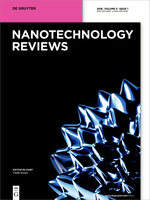
Nanotechnology Reviews
Bridging Disciplines through NanotechnologyNanotechnology Reviews, published by DE GRUYTER POLAND SP Z O O, stands at the forefront of the multidisciplinary field of nanoscience and nanotechnology. With an Open Access model adopted since 2019, this journal, identifiable by its ISSN 2191-9089 and E-ISSN 2191-9097, disseminates vital research that is accessible to a global audience. The journal is located in Germany and has established itself as a premier platform for innovative research, boasting impressive quartile rankings: Q1 across several categories including Biotechnology, Energy Engineering, and Materials Science, as well as a Q2 classification in Biomaterials as of 2023. The diverse scope enables authors to contribute to a range of topics, from biomedical applications to energy solutions and advanced materials, making it essential reading for researchers, professionals, and students passionate about cutting-edge developments. Additionally, with Scopus rankings highlighting its value across various domains and robust percentiles, including 94 in Engineering (miscellaneous), 93 in Medicine (miscellaneous), and 88 in Biotechnology, Nanotechnology Reviews is an influential and respected journal that fosters scientific dialogue and innovation.

International Journal of Nanoscience
Pioneering Insights in Multidisciplinary NanoscienceThe International Journal of Nanoscience, published by WORLD SCIENTIFIC PUBL CO PTE LTD, stands as a significant platform in the multidisciplinary field of nanoscience and nanotechnology, offering a unique insight into innovative research developments and applications from 2004 to 2024. Based in Singapore, this journal provides an academic space for researchers, professionals, and students to explore the latest advancements across its wide-ranging scopes, which include bioengineering, biotechnology, computer science applications, condensed matter physics, electrical engineering, and materials science. While currently categorized in Q4 quartiles across multiple fields, the journal's commitment to quality research and scholarly discourse positions it as a pivotal resource for driving forward the understanding and application of nanoscience. Despite its non-open access format, the journal invites subscriptions from institutions and individuals eager to stay ahead in this rapidly evolving discipline. By fostering an environment of collaboration and innovation, the International Journal of Nanoscience aims to contribute significantly to the body of knowledge essential for future breakthroughs in science and technology.
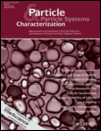
PARTICLE & PARTICLE SYSTEMS CHARACTERIZATION
Unraveling the Mysteries of Particulate SystemsPARTICLE & PARTICLE SYSTEMS CHARACTERIZATION is a distinguished journal dedicated to advancing the knowledge within the fields of Chemistry, Condensed Matter Physics, and Materials Science. Published by WILEY-V C H VERLAG GMBH in Germany, this journal has established a solid reputation since its inception in 1984, showcasing research aimed at understanding the intricate properties and behaviors of particulate systems. With an impressive Q2 ranking in its respective categories and Scopus ranks indicating a robust standing in the global research community, it serves as an essential resource for researchers, professionals, and students. Although it does not currently offer Open Access options, its comprehensive articles and reviews provide valuable insights that contribute significantly to the ongoing discourse in these scientific domains. As it prepares to celebrate four decades of publication, PARTICLE & PARTICLE SYSTEMS CHARACTERIZATION continues to provide a vital platform for emerging knowledge, fostering innovation and collaboration among scientists dedicated to the study of particle systems.
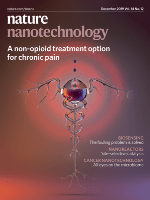
Nature Nanotechnology
Pioneering Innovations at the Nanoscale.Nature Nanotechnology, published by NATURE PORTFOLIO, stands at the forefront of scientific innovation, focusing on the rapidly evolving field of nanoscience and nanotechnology. With an impressive impact factor and ranking in the top Q1 quartiles across multiple disciplines—including Atomic and Molecular Physics, Bioengineering, and Materials Science—this journal is a pivotal resource for researchers and professionals dedicated to advancing knowledge and applications at the nanoscale. Its diverse scope encompasses cutting-edge research that bridges disciplines, addressing critical challenges in engineering, physics, and biomedical fields. Although the journal currently does not offer an open-access option, readers can access a wealth of information that is vital for anyone involved in pioneering research and development efforts. With its robust editorial standards and a commitment to publishing high-caliber, groundbreaking work, Nature Nanotechnology serves as an indispensable platform for the dissemination of transformative ideas that will shape the future of technology and science.

MATERIALS SCIENCE-POLAND
Innovating Tomorrow's Solutions, TodayMATERIALS SCIENCE-POLAND, published by SCIENDO, is an esteemed open access journal dedicated to the rapidly evolving field of materials science. Since its inception in 2002 and transitioning to an open access model in 2015, the journal has been a vital platform for researchers and professionals to disseminate their findings and contribute to the scientific community. With an ISSN of 2083-134X and an E-ISSN of 2083-134X, it spans a comprehensive range of disciplines, focusing on condensed matter physics, materials science, and mechanical engineering among others. In the 2023 rankings, it holds a position in the Q4 and Q3 quartiles across various categories, showcasing its relevance and ongoing contribution to these fields. Researchers benefit from its accessibility, enabling wider reach and engagement with contemporary topics in material innovation and applications. As the journal continues to evolve until 2024, it remains a cornerstone for scholars looking to advance their knowledge and research in materials science.

Discover Nano
Fostering Innovation through Collaborative ResearchDiscover Nano is a pioneering journal published by SPRINGER, dedicated to the rapidly evolving field of nanoscience and nanotechnology. Established in 2023, this innovative platform provides an open-access forum for researchers, professionals, and students to share and disseminate cutting-edge findings in materials science and condensed matter physics. With its commitment to accessibility, Discover Nano encourages a broad spectrum of contributions, aiming to foster collaboration and stimulate discussion in this dynamic area of study. As a new entry into the academic community, the journal holds great potential for growth, aspiring to increase its visibility and impact in the materials science arena, where it currently ranks in the bottom quartile for both materials science and physics categories. Based in Germany and reaching a global audience, Discover Nano represents a significant opportunity for those looking to shape the future of nanotechnology through impactful research and interdisciplinary dialogue.

Journal of Nanoanalysis
Transforming Research into Practical Nanotechnology SolutionsThe Journal of Nanoanalysis is a leading publication in the field of nanotechnology, dedicated to advancing the understanding and application of nanoscale analysis methodologies. Published by BORNA SANJESH KIMIA CO-BSK CO, this journal aims to provide a comprehensive platform for researchers, professionals, and students to disseminate cutting-edge findings and innovative approaches in nanomaterials characterization, nanoelectronics, and related areas. With a focus on high-quality peer-reviewed articles, the journal supports the global scientific community in fostering interdisciplinary collaboration and knowledge sharing. Although currently lacking an explicit impact factor, the Journal of Nanoanalysis is poised to make significant contributions to the field, with its commitment to open access and accessibility globally enriching the pool of research available for academic and practical advancements.
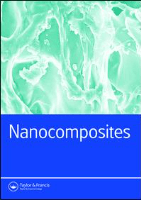
Nanocomposites
Fostering Collaboration in Cutting-Edge NanomaterialsNanocomposites, published by Taylor & Francis Ltd, is a leading open-access journal dedicated to the interdisciplinary field of nanomaterials and their applications in composites. With its ISSN 2055-0324 and E-ISSN 2055-0332, the journal has established itself as a premier platform for disseminating high-quality research since its inception in 2015. It is notable for its impressive Q1 rankings across various categories, including Ceramics and Composites, Materials Chemistry, Mechanical Engineering, and Mechanics of Materials, reflecting its significant impact on the scientific community. The journal is recognized for its rigorous peer-review process and rapid publication times, making it an essential resource for researchers and professionals seeking to advance knowledge in the synthesis, characterization, and application of nanocomposite materials. With an open access policy implemented in 2017, Nanocomposites ensures that cutting-edge research is accessible to a global audience, fostering collaboration and innovation across disciplines. Emphasizing the critical role that nanocomposites play in advancing technology, this journal invites contributions that push the boundaries of current understanding and application.
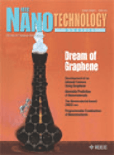
IEEE Nanotechnology Magazine
Pioneering Insights in Nanoscience and EngineeringIEEE Nanotechnology Magazine is a premier publication dedicated to the dissemination of cutting-edge research and developments in the rapidly evolving fields of nanotechnology, electrical engineering, and mechanical engineering. Published by the esteemed IEEE-Institution of Electrical and Electronics Engineers Inc., this magazine strives to bridge the gap between complex scientific research and practical applications, catering to a diverse audience of researchers, professionals, and students alike. With an impact factor that reflects its growing reputation, the magazine is currently ranked in the Q2 quartile for both Electrical and Electronic Engineering and Mechanical Engineering, and Q3 in Nanoscience and Nanotechnology, showcasing its significant contribution to these fields since its inception in 2007. The publication does not offer open access options, indicating a traditional subscription model that maintains the integrity and quality of its peer-reviewed articles. With its headquarters in the United States, IEEE Nanotechnology Magazine is an essential resource for keeping abreast of innovations that have the potential to transform technology and society as we know it, emphasizing the importance of nanotechnology in contemporary research and application.